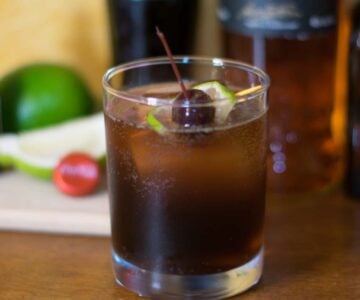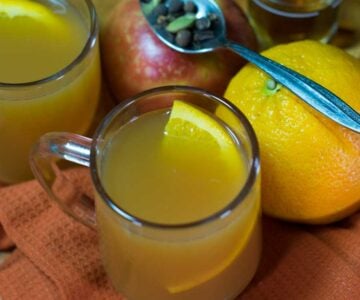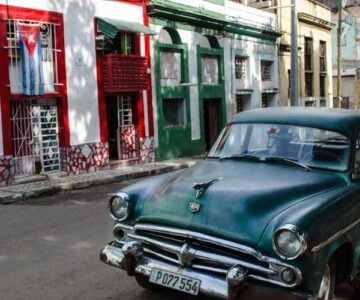Why the Cuba Libre Hates Being Called a Rum and Coke

One of the problems when you learn to drink in small bars in the middle of Minnesota, thinking the writers of Cocktail knew something about good drinks, is that you never learn about the rich history of American cocktails.
So you end up spending lots of time drinking cheap mixed drinks and arguing whether or not it’s worth the money to buy something better than the rotgut on the rail.
This struck home the other day when I was reading Vintage Spirits and Forgotten Cocktails and came across a recipe for the Cuba Libre.
Having always believed a Cuba Libre was nothing more than a fancy Rum and Coke, I was surprised to learn it was something completely different and that there might be a place for cola in the world of cocktails.

History of the Cuba Libre
The legend around the Cuba Libre is that the drink was created in Havana during the Spanish-American war by some American soldiers connected to Teddy Roosevelt’s Rough Riders. Bacardi even goes so far as to say the drink was first ordered by Captain Russell, who ordered his with Bacardi gold.
As great as it would be if this story were true, it’s been pretty well debunked since Coca-Cola wouldn’t have been readily available in Cuba when the Rough Riders were there, and anyone who clearly remembers the birth of a great drink is too sober to be trusted. There’s even some question about whether or not the drink originated in Cuba.

Unfortunately, I wasn’t able to find any great origin stories for the Rum and Coke, which wasn’t a surprise. Personally, I like to think it was some soda jerk back in Coke’s early, early days who said to himself, “you know, a little shot or two of rum would make this syrupy sweet cocaine even better.”
The heyday for the Rum and Coke was a couple of wars after Teddy led the charge up San Juan Hill. During World War II, the Rum and Coke had everything going it’s way. American distillers were required to produce industrial alcohol, which meant there was a shortage of spirits that opened up a lot of room for rum producers from the Caribbean, who weren’t subject to rationing.
It also didn’t hurt that Robert Woodruff, who was running Coca-Cola and was friends with Eisenhower, came up with the brilliant marketing scheme of making sure American soldiers could buy a Coke for 5¢, no matter where they were, which meant shipping soda fountains and syrup all over the world as a way to boost morale and ensure Coca-Cola wasn’t subject to the same rationing as everyone else.
To top everything off, so to speak, the Andrew Sisters recorded the strangely hypnotic hit ode to American cultural imperialism Rum and Coca-Cola about young girls in Trinidad falling in love with G.I.s, drinking rum and Coca-Cola, and working for the Yankee dollar.
What Makes a Cuba Libre Different than a Rum and Coke
What makes a Cuba Libre different than a regular old Rum and Coke is the lime juice. A Rum and Coke is two ingredients – rum & coke – served over ice in a glass. I’ve had them served in everything from cheap plastic glasses that feel like the Coke is going to eat through the bottom to big old German beer steins, it’s a great mixed drink, especially on a hot summer day.
A Cuba Libre is all about the lime juice. To make a traditional Cuba Libre you juice half a lime, muddling the spent shell in the bottom of the glass with the juice to bring out some of the oils in the lime, before adding the ice, rum, and coke.
What you get with a Cuba Libre is a bright island drink with all sorts of complex flavors and an interesting texture that is something completely different than a regular old Rum and Coke.
At this point you’re probably saying “whatever” under your breath, if the only difference between the two is one ingredient, then they’re really the same thing. My response is go make a peanut butter and jelly sandwich without the jelly because that’s how big the difference is between these two drinks. Don’t believe us try a taste along.

For this taste along, you’ll need a reasonably good rum, ice, some coke, and a lime. Line up three glasses and fill the first two glasses with ice, pour in 2 ounces of rum, and top off with Coca-Cola. In one of the glasses, add a lime wedge, giving it a squeeze before you drop it in.
In the third glass squeeze the juice of half of a lime, drop in the spent lime shell, and muddle the lime juice with the shell before adding ice, 2 ounces of rum, and top the glass off with Coke and a good stir.
Now take a drink of each version and see how different they are. In our testing, we tried all sorts of variations, with different types of rum, different types of coke, muddled, not muddled and what was clear after an afternoon of drinking was that the Cuba Libre is a cocktail in its own right. And the reason the Cuba Libre hates being called a Rum and Coke is because that’s why it spends all its time hidden in the back of old bar manuals, instead of being celebrated as a refreshing summer cocktail.
Recipes
– Cuba Libre
– Rum and Coke
Mark is an experienced food writer, recipe developer, and photographer who is also Umami’s publisher and CEO. A passionate cook who loves to cook for friends, he can often be found in the kitchen or by the grill testing new recipes.
More Info About Mark Hinds






Leave a Reply